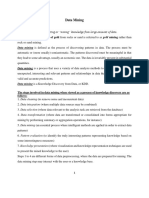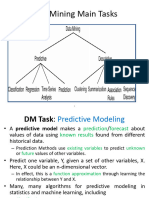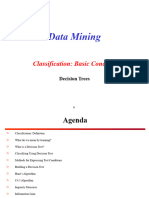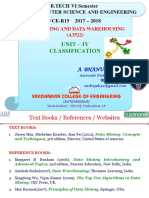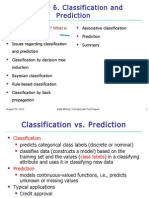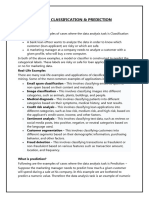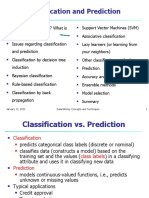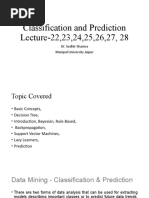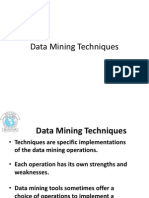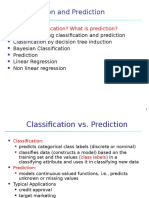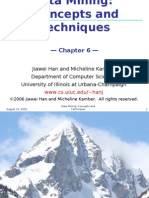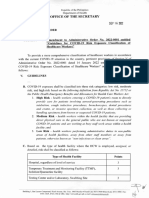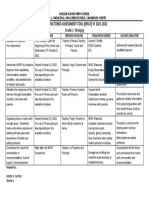0% found this document useful (0 votes)
105 views20 pagesData Mining Basics for Beginners
The document provides an overview of data mining, focusing on machine learning and classification techniques. It explains the types of learning, including supervised and unsupervised learning, and details the classification process, its applications, and various techniques used. Additionally, it discusses the advantages and disadvantages of classification in data mining.
Uploaded by
ssri62439Copyright
© © All Rights Reserved
We take content rights seriously. If you suspect this is your content, claim it here.
Available Formats
Download as PPTX, PDF, TXT or read online on Scribd
0% found this document useful (0 votes)
105 views20 pagesData Mining Basics for Beginners
The document provides an overview of data mining, focusing on machine learning and classification techniques. It explains the types of learning, including supervised and unsupervised learning, and details the classification process, its applications, and various techniques used. Additionally, it discusses the advantages and disadvantages of classification in data mining.
Uploaded by
ssri62439Copyright
© © All Rights Reserved
We take content rights seriously. If you suspect this is your content, claim it here.
Available Formats
Download as PPTX, PDF, TXT or read online on Scribd
/ 20









